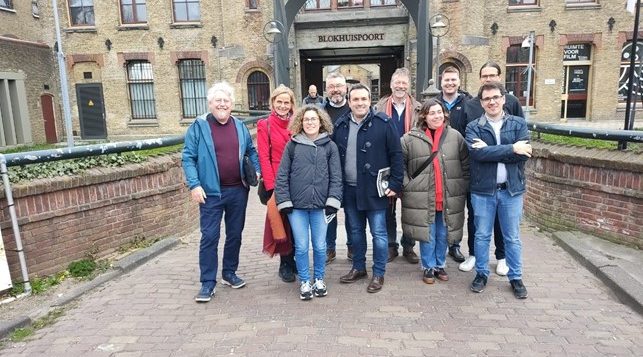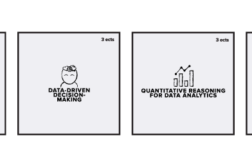Our travel group went on a learning trip to NHL Stenden and Future Design Factory in the Netherlands. Our RUN European University partners from Portugal and Ireland and the Design Factory Global Network partner from Germany were on the trip. The purpose of the trip was to exchange experiences and brainstorm together how regional development needs can be meaningfully combined with learning.
At NHL Stenden, the cornerstones of higher education are the streamlined Competence Objectives and the design of learning. Design Based Education has been chosen as the guiding model for the entire university to support students in the development of future skills and competences. The most central idea is that the training does not start from the content, but the learner commits to the process by defining his own needs. The learner commits to building his own competence in cooperation with other learners and teacher-tutors.

Learning in the Communication & Multimedia Design (CMD) degree program is guided by five competencies, the learning and demonstration of which is the responsibility of the students. Students have freedom, but also responsibility for developing their own skills. These five broad competencies include the following skills:
- Research: The CMD student studies the problem, tests, improves and implements the solution to the problem.
- Design: CMD students develop concepts that form the basis for the design and creation of multimedia products.
- Communication: The CMD student communicates orally and in writing in Dutch and English with peers, experts and stakeholders involved in the project (including documentation, presentations, meetings).
- Organization: The CMD student works in a multidisciplinary team and coaches both himself and his team.
- Learning: CMD students reflect on their own work and activities and share their own knowledge and skills to promote innovation and development.
Commitment to the operating model
Eric Voigt, director of Future Design Factory, describes the comprehensiveness of the operating model: “For us, everyone has to commit to this, we don’t ask if you want it.” Teachers are called tutors or mentors and they play an important role in training students and evaluating competence. When the student feels that he is ready to demonstrate his competence in relation to these competencies, two different teachers together evaluate the student’s competence based on a discussion or demonstration of competence. As a rule, participation in lectures held by teachers is not mandatory, and no record is kept of them. Instead, teachers know their students personally and in case of frequent absences, they raise the issue with the student and discuss the situation. However, the main responsibility lies with the student himself to take care of the development of his own competence in the way he chooses.
The background of design-based education is a strong competence base, the authenticity of learning and design broadly understood. The starting point is that learning takes place in authentic environments where real problems arising from business life or the public sector are solved. This means that it is not precisely defined in advance what skills are needed in a real-life project and what tools should be used in the project. However, the considered and selected five competence goals describe key future competences, for the development of which real-life projects are perfectly suited.
Identifying skills
In the projects, the students work as a team and each student chooses what kind of competence he develops in which project. In one project, the role can be e.g. the role of the project leader, and in another project the development of competence can focus on communication or research. The students develop these necessary competences they have identified during the projects. They utilize or learn to use tools and methods that are appropriate for problem solving in that situation. If the textbooks and teachers’ toolkits do not already contain suitable methods for solving a new problem, the students develop one. As an example of this, the wall of the Future Design Factory was decorated with a presentation canvas developed by the students, which the students use in teamwork to build their own presentations for companies.
The Portuguese colleagues asked from what they had heard that isn’t the idea of the education that all the contents of the curriculum are reviewed under the guidance of the teachers? This is not really the case with design-based training, but the content of the learning arises from the real problems and needs of the companies manifested in the projects. This is indeed an innovative way of combining regional development needs with learning, the application of which we are going to map together more broadly, inspired by the trip.
Jari Jussila, Irma Kunnari, Antti Viiman




Discussion1 Comment
Pingback: Korkeakouluopiskelijan pehmeät taidot - HAMK Beat